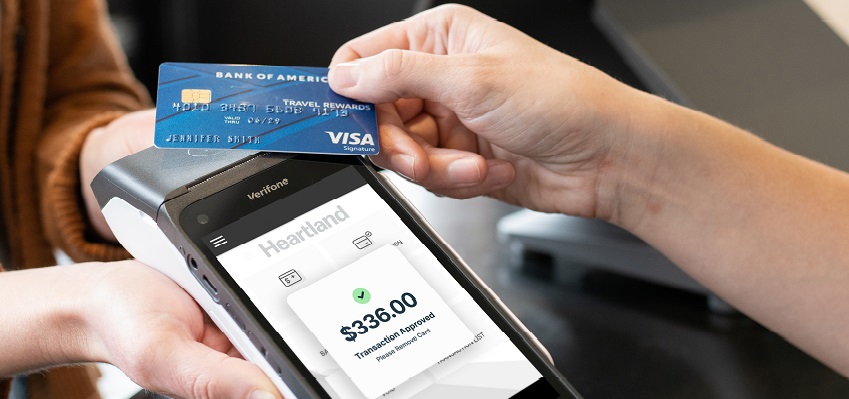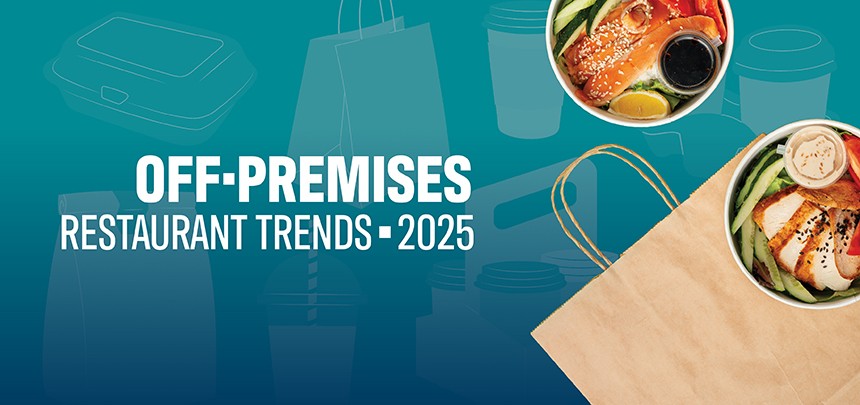Articles
April 15, 2025
3 steps to get customers emotionally invested in your brand
The key lies in building customer loyalty, and there’s no better way than loyalty programs.

Besides loyalty programs, customers also say they desire speedy service, easy tech-enabled ordering and payment, and discount/value offerings.
More than three-quarters of restaurant customers say they’re more likely to visit a restaurant where they can earn points, even if it isn’t as convenient, according to the National Restaurant Association’s 2025 State of the Restaurant Industry report. So, it’s no wonder that more than two-thirds of restaurants offer a loyalty program.
A new Association report, “Off Premises Restaurant Trends 2025” drives home the point, noting that loyalty programs are one of the five “must-have” attributes of a successful off-premises business. Nearly two-thirds of all drive-thru, delivery and takeout customers say belonging to a loyalty program is an important reason for choosing a restaurant.
The other attributes—speedy service, good customer service, easy tech-enabled ordering and payment, and discounts/value offers—also build loyalty, so why do you need a loyalty program?
1. Build a foundation
The basis of customer loyalty is your ability to build a solid, consistent, and supportive relationship with restaurant patrons. You provide more than a product to customers, you provide a service. When customers feel that you care about them beyond the transaction of exchanging money for food, they’re more apt to share their experience with other potential customers. Word of mouth referrals are one of the most powerful marketing strategies you have. Building that foundation requires:
Customer loyalty programs tend to be very transactional, especially early on as you build the program. These transactions are usually pretty straightforward financial benefits for specific behavior—buy 10 drinks, get the next one free; earn so many points for a free dessert; take 15% off your bill every fifth visit.
You can build customer loyalty even more by layering brand experiences on top of transactions, deepening the bond with customers. This level of participation rewards customers with exclusive opportunities, experiences such as invitations to a chef’s tasting table, special wine-tasting night, VIP events, or personalized service from a dedicated concierge. Special perks provide a sense of special status.
This shift takes the customer on a journey from “share of wallet” toward “share of heart.” When you add yet another layer onto your loyalty program that focuses on connecting customers to your restaurant’s community and sense of values, your customers will become even more emotionally invested in your brand. A Seattle operation, for example, turned over the entire restaurant to customers once a month to cook meals for homeless shelters across the city. The restaurant’s purveyors donated protein, and customers brought produce or flavoring ingredients of their choice. Menus were made up on the spot based on what was at hand, producing 500-750 restaurant quality meals each time.
Ultimately, customers want to feel special. Your job, and that of your staff, is to make them feel that way every time they frequent your restaurant. Loyalty programs build on that foundation and give them even more reasons to come back.
A new Association report, “Off Premises Restaurant Trends 2025” drives home the point, noting that loyalty programs are one of the five “must-have” attributes of a successful off-premises business. Nearly two-thirds of all drive-thru, delivery and takeout customers say belonging to a loyalty program is an important reason for choosing a restaurant.
The other attributes—speedy service, good customer service, easy tech-enabled ordering and payment, and discounts/value offers—also build loyalty, so why do you need a loyalty program?
1. Build a foundation
The basis of customer loyalty is your ability to build a solid, consistent, and supportive relationship with restaurant patrons. You provide more than a product to customers, you provide a service. When customers feel that you care about them beyond the transaction of exchanging money for food, they’re more apt to share their experience with other potential customers. Word of mouth referrals are one of the most powerful marketing strategies you have. Building that foundation requires:
- Be reachable. Monitor your channels to respond to customers, whether they choose to get in touch via text, email, phone or website.
- Stay consistent. Communicate the same things to your customers in person and across all platforms. Use software to track what you’ve said to whom and where. Customer relationship management (CRM) programs help you maintain a history of a customer’s communication with your restaurant as well as important dates like birthdays and anniversaries.
- Provide positive experiences. A good experience provides customers with added value and a story to share. Find ways to turn mistakes into positive outcomes. Customers are likely to avoid a restaurant after a poor experience, but turning a negative experience into a positive experience is a powerful incentive for repeat business.
- Incentivize loyalty. Taking the steps above helps you build trust with your customers and strengthens your brand. Recognizing and rewarding their loyalty and repeat business cements the relationship even further.
- Establish goals. What do you want to accomplish initially? Do you want referrals? More traffic or repeat business? Increased sales? Bigger check averages? Customer feedback? Come up with one or two that are high priorities and focus on those to start.
- Start simple. You can always add to the program as time goes on. Make sure your reward system is clear and easy for customers to implement. Post FAQs on your website and social media sites and make both hard and digital copies of the program available. Keep it simple, but make sure customers understand the benefits.
- Determine structure. Develop the rules, expectations, and guidelines, and determine how the program will work logistically. Will you use reward cards? How will you track spending or visits? Will customers sign up through existing software, and is it available on all touch points (web, mobile, email, etc.)?
- Choose software/POS with the right tools to track data. Integrating your loyalty program software with your POS makes it easier to track customer accounts and dispense rewards. Software should automate your program as much as possible to free up employees for their real job—providing excellent customer service—and make the customer’s loyalty program experience seamless. The software also should be available on all platforms your customers use—mobile, web, SMS, and email—so customers can participate wherever they are. Look for tools such as AI and data analytics that can personalize every customer’s interactions, and anticipate customer preferences.
- Assess and reevaluate constantly. Encourage feedback from customers and adjust your program accordingly. Be flexible and nimble as you learn which components work best, creating a formula that generates increased customer loyalty while boosting business at the same time.
Customer loyalty programs tend to be very transactional, especially early on as you build the program. These transactions are usually pretty straightforward financial benefits for specific behavior—buy 10 drinks, get the next one free; earn so many points for a free dessert; take 15% off your bill every fifth visit.
You can build customer loyalty even more by layering brand experiences on top of transactions, deepening the bond with customers. This level of participation rewards customers with exclusive opportunities, experiences such as invitations to a chef’s tasting table, special wine-tasting night, VIP events, or personalized service from a dedicated concierge. Special perks provide a sense of special status.
This shift takes the customer on a journey from “share of wallet” toward “share of heart.” When you add yet another layer onto your loyalty program that focuses on connecting customers to your restaurant’s community and sense of values, your customers will become even more emotionally invested in your brand. A Seattle operation, for example, turned over the entire restaurant to customers once a month to cook meals for homeless shelters across the city. The restaurant’s purveyors donated protein, and customers brought produce or flavoring ingredients of their choice. Menus were made up on the spot based on what was at hand, producing 500-750 restaurant quality meals each time.
Ultimately, customers want to feel special. Your job, and that of your staff, is to make them feel that way every time they frequent your restaurant. Loyalty programs build on that foundation and give them even more reasons to come back.
Sponsored by Heartland
-
Heartland - TechHeartland provides entrepreneurs with software-driven technology to manage and grow their business. The company serves more than 400,000 merchants nationwide, delivering trusted solutions for payment, payroll and human resources, point of sale, customer engagement and lending. Heartland is a leading industry advocate of transparency, merchant rights and security. Heartland is a Global Payments Company (NYSE: GPN).Learn More
Get the report
Get the report
Sign up for our Newsletter
The latest news from the National Restaurant Association, published every other Thursday
By clicking Submit I agree to receive email communications from the National Restaurant Association and agree to our Privacy Policy(Opens in a new window).

